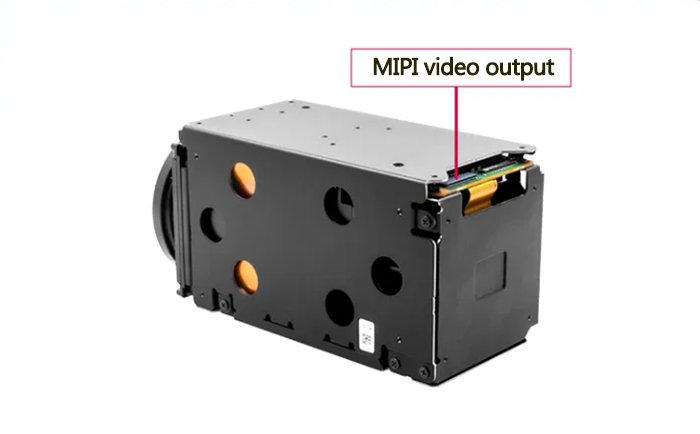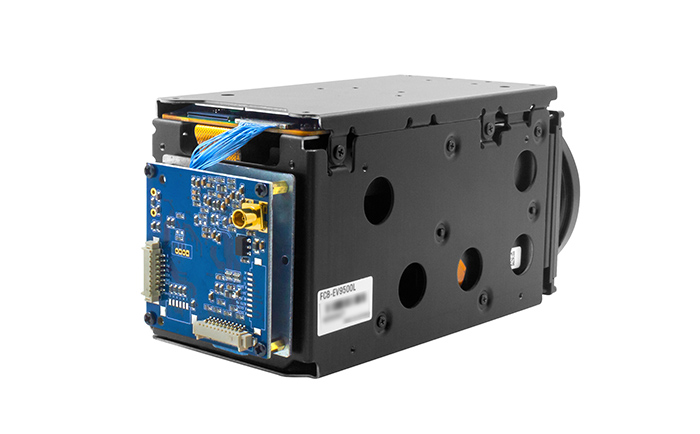In fields such as industrial vision, intelligent transportation, unmanned aerial vehicles, and security monitoring, where real-time performance and stability are highly demanded, the selection of image transmission interfaces often determines the overall performance of the system.
As high-definition camera core modules of the same series, SONY FCB-EV9500M and FCB-EV9500L only differ in their interfaces. They respectively adopt MIPI and LVDS interface technologies, demonstrating differentiated advantages in data transmission efficiency, anti-interference ability, and system integration.

Danny Wong, a senior engineer from Xuanzhan Technology, will analyze how these two interfaces reshape the ecological landscape of industrial image transmission from three dimensions: technical principles, application scenarios, and performance comparisons.
I. Technical Principles: The essential differences from the physical Layer to the protocol Layer
1. MIPI Interface: The “High-Speed Gene” of Mobile Terminals
Since its establishment in 2003, the MIPI (Mobile Industry Processor Interface) Alliance has completely transformed the internal architecture of mobile devices such as mobile phones through protocols like the Standardized Camera Interface (CSI-2) and Display Interface (DSI). The MIPI CSI-2 protocol adopted by FCB-EV9500M has three core advantages:
High-speed transmission: Supports 4-channel differential signal transmission, with a single-channel rate of up to 2.5Gbps and a total bandwidth exceeding 10Gbps, capable of easily carrying 1080P/60fps full HD video streams.
Low-power design: It adopts a 1.2V low-voltage differential signal (LVDS), which reduces power consumption compared to traditional parallel interfaces and is suitable for battery-powered scenarios such as drones and portable medical devices.
Anti-interference capability: Differential signals can effectively suppress common-mode noise, maintaining signal integrity even in industrial production lines with complex electromagnetic environments.
2. LVDS Interface: The “Stable Cornerstone” in the Industrial Field
Since its birth in 1994, LVDS (Low Voltage Differential Signaling) technology has become a standard interface in fields such as security monitoring and machine vision, thanks to its anti-interference and low latency characteristics. The LVDS interface adopted by FCB-EV9500L has the following technical features:
Constant current drive: By driving the differential pair with a 3.5mA constant current source, the voltage swing is only 350mV, significantly reducing EMI interference.
Point-to-point direct connection: A single 30-core ultra-thin coaxial cable can simultaneously transmit video, control signals (VISCA protocol), and power, simplifying system wiring.
Ultra-low latency: The latency from image acquisition to output is less than 5ms, meeting the real-time response requirements for emergencies (such as running red lights) in traffic monitoring.
Ii. Application Scenarios: Precise Adaptation from Laboratory to Industrialization
1. MIPI interface: Empowering lightweighting and intelligence
Engineer debugging: The MIPI interface of the FCB-EV9500M supports direct connection to mobile platforms, enabling real-time transmission of high-definition video without the need for an additional coding board. It is an extremely rare camera module for engineers to debug and develop.
Medical endoscope: It is directly connected to the FPGA processing unit through the MIPI interface to achieve real-time enhanced processing of endoscope images. In laparoscopic surgery, its point light source avoidance function can prevent the interference of surgical lamp reflection and ensure that the vascular texture is clearly visible.
Security monitoring: By integrating with the VRS-UD350 network interface board independently developed by Xuanzhan Technology, a provider of high-definition video secondary development solutions, the video signal of the camera module can be converted into a network video signal, enabling long-distance transmission and control.
2. LVDS interface: Safeguards high reliability and long-distance transmission
Intelligent traffic monitoring: In a certain elevated road project, the FCB-EV9500L integrates the LVDS to 3G-SDI interface board to output high-definition and real-time video transmission. Its super image stabilization function can counteract vehicle vibrations, ensuring accurate recognition of license plates 250 meters away.

Security monitoring: The VRS-UD350 network interface board developed by Xuanzhan Technology is not only compatible with MIPI interface camera modules but also with LVDS interface camera modules. It can also convert the video signal of the SONY FCB-EV9500L camera module into a network video signal, achieving long-distance transmission and control.
Iii. Performance Comparison: The Technical Game Behind the Data
Performance Indicators: FCB-EV9500M (MIPI), FCB-EV9500L (LVDS
Maximum bandwidth: 10Gbps (4 channels @2.5Gbps), 1.6Gbps (single channel @400 MBPS)
Transmission distance: ≤1m (requires MIPI to LVDS converter) : ≤10m (natively supported)
Power consumption: 3.2W (1080P/60fps), 4.5W (1080P/60fps)
Anti-interference capability: 90dB (differential signal), 85dB (constant current drive)
The system has a high degree of integration (supporting direct connection with mobile SoC) and requires an independent coding board.
Typical application scenarios include unmanned aerial vehicles, medical endoscopes, AI visual inspection, traffic monitoring, industrial robots, and security centers
Iv. Technological Evolution: From “Single-point Breakthrough” to “Ecological Integration”
With the popularization of 5G+AIoT technology, MIPI and LVDS interfaces are showing a trend of integration:
MIPI over LVDS: MIPI protocol data is transmitted through the LVDS physical layer, achieving long-distance transmission of 10 meters while retaining the low latency feature.
LVDS to MIPI Adapter Board: To meet the needs of numerous camera secondary development and debugging engineers, Xuanzhan Technology has specially developed an LVDS to MIPI adapter board, which can convert LVDS interface camera modules into MIPI signals for output, achieving high-speed and stable transmission.
Conclusion: Choosing an interface is also choosing a technical ecosystem
The interface competition between SONY’s FCB-EV9500M and FCB-EV9500L is essentially a collision between the mobile intelligent ecosystem and the industrial control ecosystem. For scenarios that pursue ultimate lightweight and AI computing power, the MIPI interface is the key to breaking the deadlock. However, for fields that emphasize stability and long-distance transmission, the LVDS interface remains irreplaceable. Through its “dual-track strategy”, SONY has not only consolidated its advantages in traditional markets such as security and transportation, but also paved a technological fast lane for emerging fields like drones and healthcare – this might precisely be the deep layout of the imaging giant in the era of Industry 4.0.
 Sony FCB camera block
Sony FCB camera block